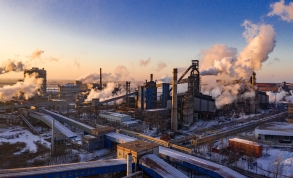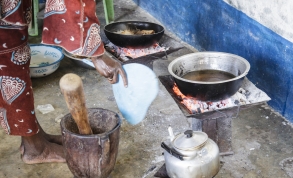Abstract
Baoding and Langfang, two cities in the Hebei province of China, are now coal-free due to the installation of over one million wall-mounted natural gas stoves that replace coal use in homes. The intervention resulted in reductions in air pollutants and greenhouse gas emissions in both cities, but the magnitude of effects differed between the two, with higher reductions of some gases in Baoding than in Langfang.
Intervention overview
The use of coal-burning stoves is very common in rural homes in China. These traditional stoves are known to result in premature mortality from indoor air pollution and are a major contributor to climate change. Policies in China have aimed to incentivise the switch to clean fuel stoves. The Hebei Province, a coal-dependent region in Northern China, has high levels of air pollution caused by residential coal-fire heating in winter.
Since 2016, the Hebei Air Pollution Prevention and Control Programme has aimed to reduce pollutant emissions from households. Two cities, Baoding and Langfang, are now recognised as coal-free regions, where approximately 1.25 million wall-mounted natural gas stoves have been installed for rural families to replace coal use. So far, the intervention has prevented over 6,000 premature deaths by reducing PM2.5.
Outcomes
Within one winter season (approx. 121 days), there were reported reductions of 10,015 kilotons of CO2 and 83 kilotons of CH4 from 573,000 households in Baoding and 674,000 in Langfang.
The programme further resulted in reductions of 538 kilotons of CO, 2 kilotons of NOx, 9 kilotons of SO2, 9080 kilotons of PM2.5, and 13,182 kilotons of PM10. Moreover, more than 6,000 premature deaths were averted from the reduction in PM2.5.
Feasibility and potential impact of scale-up
According to the China Heating Stove Report 2016 by the China Association of Rural Energy Industry (http://www.carei.org.cn/), there are 66 million households in rural areas using coal burning as their main heating method, with only 23% of the 120 million heating stoves in use being clean stoves. Therefore, large environmental and health benefits could be achieved by switching from coal-fired stoves to cleaner fuels. If the 66 million rural households were to switch to cleaner stoves, approximately 661,000 kilotons of CO2 and almost 400,000 premature deaths from PM2.5 could be averted in one winter season.
Higher reductions of CO2 and CH4 were seen in the Baoding region than in Langfang due to the different types of stoves used in these regions. Stoves used in Baoding emitted much less CH4 and had lower PM2.5 and PM10 emissions than stoves used in Langfang. Stove type is therefore an important consideration when evaluating the effectiveness of such interventions. Emissions can also vary with ambient temperature, local energy habits, chimney design, and home structure. In addition to upgrading or replacing stoves, complete transition to clean fuels also requires end user behaviour change. Often households use cleaner fuels without giving up solid fuel stoves due to perceived cultural or cost benefits.
In a recent study, clean-fuel uptake and solid-fuel suspension were explored among 753 Chinese adults. The study found that, during the past 20 years, only 35% of the participants suspended use of solid fuel for cooking, while 17% suspended use for heating. The study also found that determinants of solid fuel suspension and clean-fuel uptake differed - similarly for cooking versus heating. For example, higher income was found to be associated with the adoption of clean cooking fuel but not with the suspension of solid cooking fuel except for the highest bracket. Higher income was not associated with either the adoption of clean heating fuel or the suspension of solid heating fuel (Carter et al., 2020).
References
Academic profile / relevant organisation’s page
- Zhao, N., Li, B., Li, H., Ahmad, R., Peng, K., Chen, D., ... & Zayan, A. M. I. (2020). Field-based measurements of natural gas burning in domestic wall-mounted gas stove and estimates of climate, health and economic benefits in rural Baoding and Langfang regions of Northern China. Atmospheric Environment, 229, 117454.
Supplementary information
- Carter, E., Yan, L., Fu, Y., Robinson, B., Kelly, F., Elliott, P., ... & Baumgartner, J. (2020). Household transitions to clean energy in a multiprovincial cohort study in China. Nature Sustainability, 3(1), 42-50.



